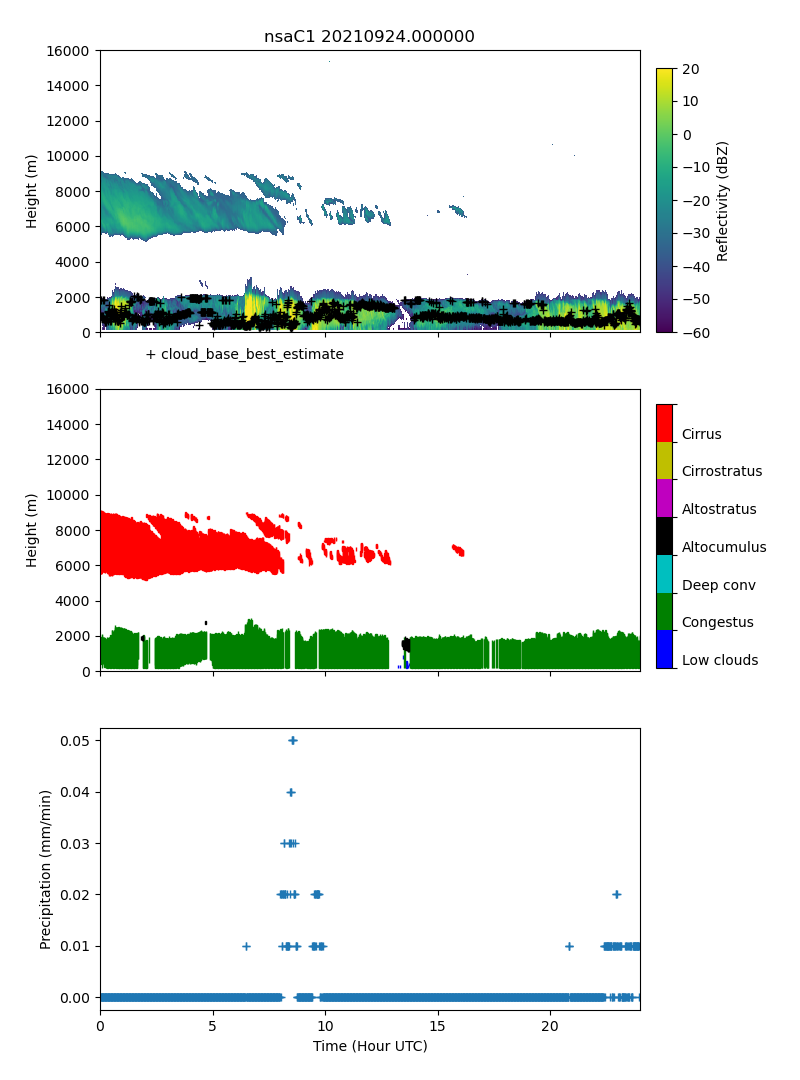Cloud Type Classification Product Expands to North Slope of Alaska
Published: 7 June 2023

The Cloud Type Classification value-added product (CLDTYPE VAP) is now available for the Atmospheric Radiation Measurement (ARM) user facility’s North Slope of Alaska (NSA) atmospheric observatory.
CLDTYPE provides an automated cloud type classification based on macrophysical quantities derived from vertically pointing lidar and radar at ARM sites. Up to 10 layers of clouds are classified into seven cloud types based on predetermined and site-specific thresholds of cloud top height, cloud base height, and thickness.
Scientists can access NSA CLDTYPE data from March 25, 1998, through April 29, 2023, in the ARM Data Center. (Go here to create an account to download the data.)
Regular processing will begin at the NSA when required input data products become available.
More information about CLDTYPE can be found on the VAP web page. For questions about the VAP, please contact ARM translator Damao Zhang or developer Krista Gaustad.
To cite the CLDTYPE data, please use doi:10.5439/1349884.
Keep up with the Atmospheric Observer
Updates on ARM news, events, and opportunities delivered to your inbox
ARM User Profile
ARM welcomes users from all institutions and nations. A free ARM user account is needed to access ARM data.


















